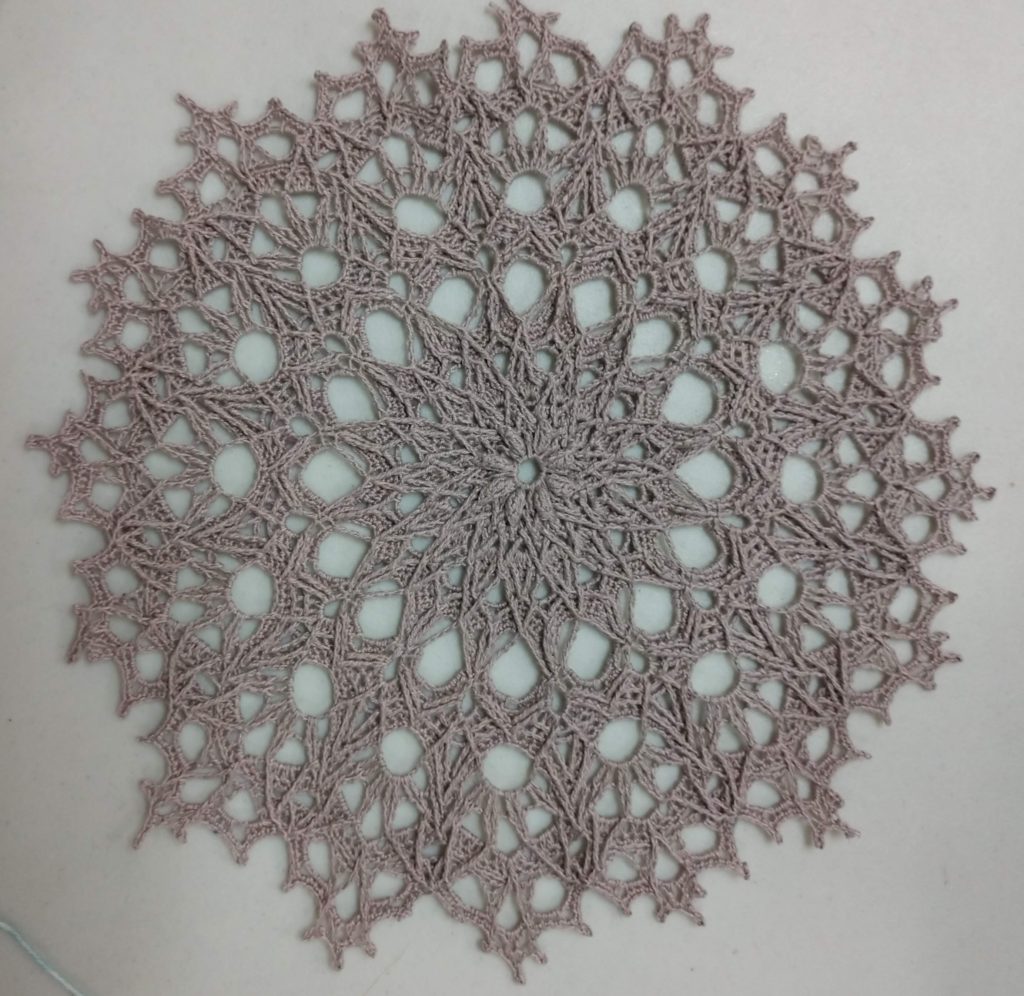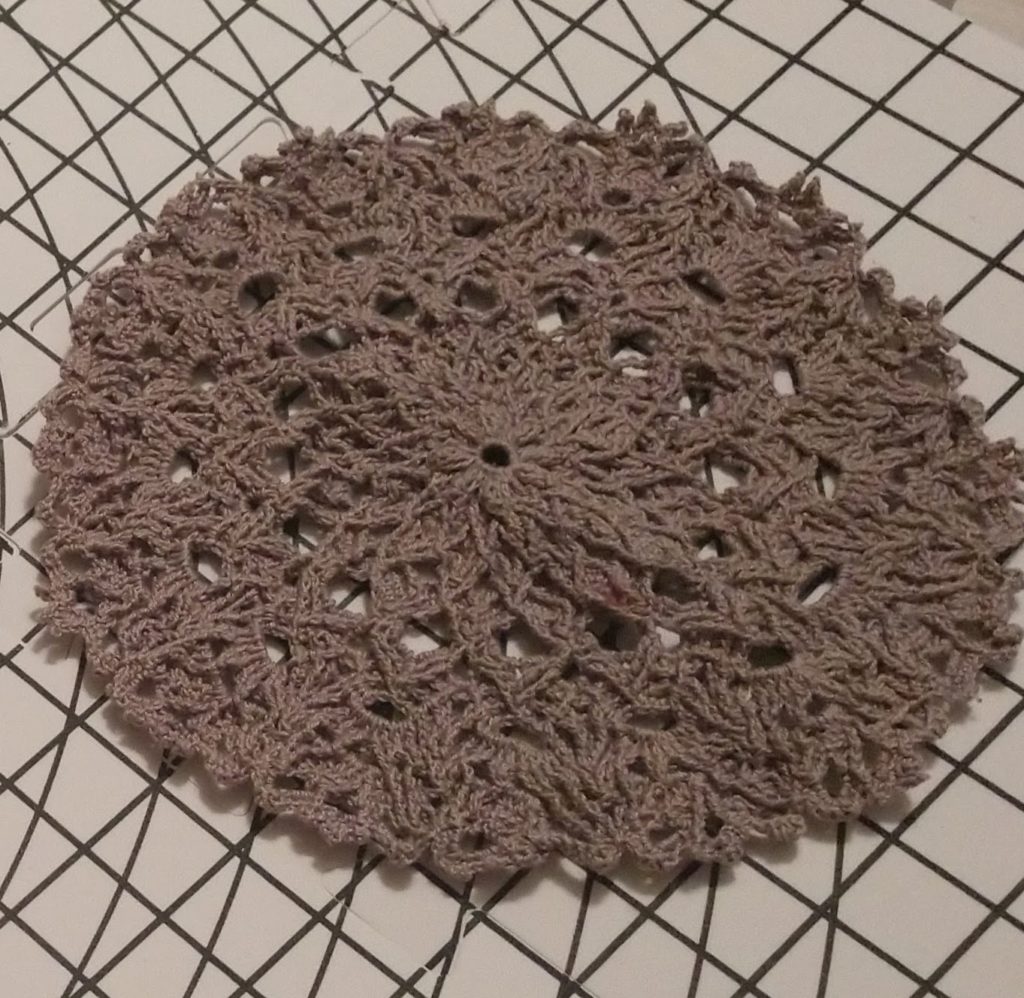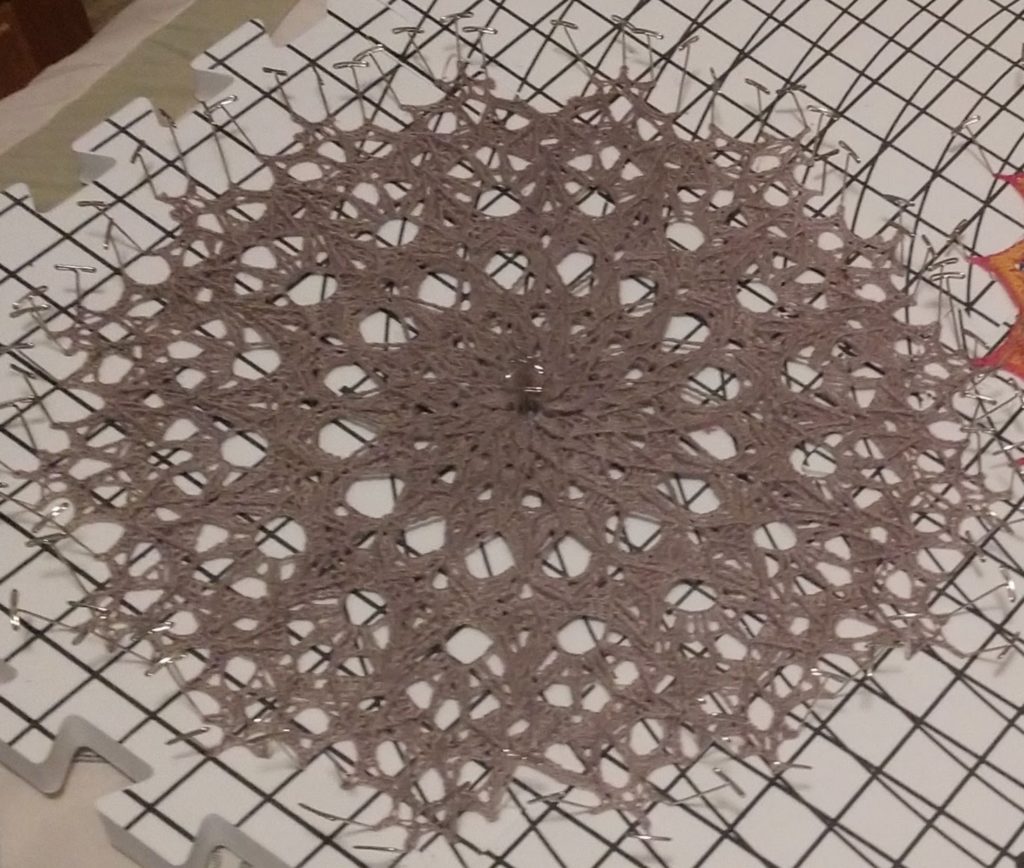To Block Or Not To Block
Have you ever blocked anything? Some things are fine right when they come off the hook, and so you may be tempted to not block them. Especially big, bulky things like large blankets. But, blocking is really a game changer when it comes to a project looking really finished.
With doilies, it’s a no brainer. Doilies are usually made with very fine cotton thread in a lacy pattern that really shines when it’s blocked and opens up.
Take for example, this doily I made using Grace Fearon’s design Whitney

It’s beautiful, isn’t it? Very lacy and lots of delicate little picots around the edges. Let me tell you, it was a nightmare to block. But, so very worth it for this finished product!
This next photo is Whitney before blocking.

Hardly looks like the same doily, does it? It’s kind of thick, and while you see there are detailed post stitches throughout, it doesn’t really wow me.
Just to really appreciate the difference, here’s a side by side.

So, how do you achieve those results?
For something like a doily, a wet block works best. Some people like to soak in a corn starch and water mixture, or use liquid fabric starch. I don’t like stiff doilies, so I stick to just water.
Next, I set up my blocking boards. If you have interlocking foam mats, those work great! I bought this set and I love them. If you’re making doilies, they have concentric circles to help you line up your outer edges and know they’re symmetrical. As you can see, I didn’t use those for this project because I was blocking several things at once and I needed all the space.
This set happens to come with 100 t-pins which are what you use to hold your project in place. This is a perfect set for getting started. I store mine behind a dresser in my guest room. When I need it, I pull it out, spread it on the bed and get to work.
It is not mandatory to use blocking boards when blocking things. The main benefit is that it has a grid to help you line things up straight, and gives you the opportunity to lift your projects (very carefully) off the surface you’re using to support them so you can use that surface. My guest room has a frequent visitor, my dear mother in law, so if she’s visiting, she sleeps there at night and I move the boards somewhere else overnight.
If you are fortunate enough, as I am, to have a bed that isn’t always in use, you can just block directly on the mattress. My guest room has a ceiling fan, which I find particularly helpful to speed up the drying process. And a nice door I can close to keep the kitties away. Of course, my one kitty, Percy, likes to stretch up and open that door so I have to lock it to keep him out. But, it’s securable.
Now, if you are blocking something with long straight edges, like a shawl, afghan, sweater, table runner, etc, you might benefit from a set of blocking wires.
These are not necessary, precisely, but if you have long straight edges, they will make your life a whole lot easier. If you don’t have blocking wires, you will definitely need more pins. A LOT more pins
I like these:
T-Pins are really important and it’s essential they’re made of a high quality steel and are rust proof. I’ve had this set for years and they have served me well.
Okay, now that you have all the supplies, what next?

I start in the middle of a round doily and secure it with several pins. If I used just one, it might leave a mark. Even two is not enough. So I use at least 4 and try to make it look as circular as possible.
My next step is to start at approximately 12:00 and secure the outermost picot. I don’t worry about the littler ones yet. I then travel across to 6:00 and secure the corresponding picot. I repeat the steps for 3:00 and 9:00. I now step back and make sure that everything looks symmetrical. Did I actually get the right picots? Are there the same (or approximately the same) number of picots between each pin?
The next steps are pretty much the same. This was a 16 pointed circle, easily divided by 4, so I had 3 picots between each point. I would go halfway between each “quarter hour” and pin one picot, then do the corresponding picot on the opposite side. And, keep repeating that process until all the outermost pins are in place.
Next comes the tricky part. Each of these points is composed of 3 picots. If I stopped here, my points would show up, but they wouldn’t be anywhere near as lovely as the one I showed you. So you have to meticulously go around the edges and find every single little picot and spread them evenly. It can take a whole lot of pins to do this. But, why go to the trouble of making a beautiful doily if you’re not going to let it shine?
Once it’s all blocked out, it will look like this.

Some people use pins in the center, but I find I don’t have to. I stretch my work within an inch of its life and the stitches open up nicely. The more pins you use, the more likely you are to put a wonky line somewhere you don’t want. So I let it do its thing and hope for the best. You can always reblock if you need to!
So, that’s the basics of blocking doilies. They really are simple to block just a little tedious. Squares are the easiest and can be stacked to block multiple squares at a time. I make a lot of shawls, which are really long on one side and shorter on the other. They can be difficult to keep the angles symmetrical and keep the tension evenly spaced on the long side. I’ll go over my techniques for that in another post.
Happy hooking everyone!



